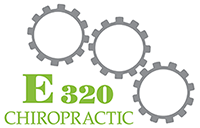SHARE THE LOVE
This time of year, our office is gearing up for the back-to-school season. As a pediatric and family office, we know the mixture of hope and concern some of our parents may be feeling if their child has ADHD, Sensory Processing Disorder (SPD), or anxiety. Their child is full of creativity, compassion, and potential, but the structured school environment, social pressures, and academic challenges can bring stress to the whole family.
If you’re up at night worrying about your child’s sleep problems, difficulties with transitions, struggles to stay focused in class, or challenges in managing emotions and behavior, know that you’re not alone. More importantly, there is hope, and you have more power than you might realize to set your child up for success this school year without relying solely on medication. At E320 Chiropractic, we specialize in helping families just like yours find natural, effective solutions to support their child’s health and well-being.
Understanding ADHD and SPD in Today’s World
Before diving into strategies, it’s important to acknowledge a troubling trend: the rates of ADHD, SPD, and anxiety in children have surged in recent years. Conventional medicine often cites genetics and neurotransmitter imbalances as causes, but it’s essential to consider the broader context. Children today grow up in a fast-paced, highly stimulating world with less opportunity for physical activity, unstructured play, and connection with nature.
We believe in a holistic, root-cause approach to supporting children with ADHD and SPD. By addressing underlying nervous system imbalances and making strategic lifestyle changes, we aim to help your child thrive in school and beyond.
5 Effective Strategies for a Successful School Year
1. Gradually Adjust Sleep Schedules
Quality sleep is vital for managing ADHD and SPD symptoms. During sleep, the brain consolidates learning, processes emotions, and recharges. Unfortunately, many children with ADHD and SPD struggle with sleep issues, creating a cycle of fatigue, irritability, and difficulty concentrating.
Here’s how to get back on track:
- Adjust bedtimes and wake times by 15 minutes every few days. A gradual adjustment in sleep times is much less jarring than a sudden change.
- Establish a calming bedtime routine.
- Minimize screen time at least an hour before bed.
- Create a sleep-friendly environment.
2. Organize the Home Environment
Children with ADHD and SPD often have trouble with organization and executive function skills. Creating structure and predictability at home can reduce anxiety and help your child feel more in control.
Here’s how:
- Set up a central command center to track schedules, assignments, and important events.
- Designate specific spaces for school items to reduce morning stress.
- Implement color-coded systems.
- Create checklists for routines, breaking them into simple steps.
3. Create a Distraction-Free Study Space
Children with ADHD and SPD are often highly sensitive to their environment. A dedicated, distraction-free space for homework and studying can make a significant difference.
Here’s how:
- Choose a quiet area away from high-traffic parts of the house.
- Ensure the space is well-lit, either with natural light or a good desk lamp.
- Stock the area with all necessary supplies to reduce distractions.
- If silence is too distracting, try white noise or instrumental music to help with focus.
4. Prioritize Morning Exercise and Physical Activity
Exercise offers immense benefits for children with ADHD and SPD. Physical activity improves cognitive function, boosts mood, and helps manage anxiety.
Here’s how to incorporate more movement into your child’s routine:
- Start the day with exercise to improve cognitive function and emotional balance.
- Look for opportunities for movement throughout the day, such as using a stability ball instead of a chair for homework or taking “brain breaks” to do jumping jacks or stretches.
- Make movement enjoyable and natural, not a chore.
5. Neurologically-Focused Chiropractic Care
This might be new territory for you, but for many families, it’s transformative. ADHD and SPD are often marked by an overactive sympathetic “fight or flight” response, making it difficult for children to focus, transition between activities, or regulate emotions. Neurologically-Focused Chiropractic Care addresses these imbalances.
Through gentle, specific adjustments, we work to release tension in the sympathetic nervous system while activating the calming parasympathetic system, including the vagus nerve. This approach can lead to a range of benefits, including improved focus, balanced energy and emotions, enhanced sleep quality, stronger immune function, better digestion, fewer behavioral challenges, and increased confidence and social skills.
At E320 Chiropractic, we use advanced diagnostic tools called INSiGHT Scans to create personalized care plans for each child. These scans allow us to pinpoint areas of nervous system stress and track improvements over time.
Empowering Your Child for the School Year Ahead
By implementing these strategies and addressing the root causes of your child’s symptoms, you can set them up for a successful school year. Your child’s brilliant mind deserves every opportunity to shine – in the classroom and beyond.
Remember, every child is unique, and what works for one may not work for another. Be patient with yourself and your child as you implement these strategies. The journey may have its challenges, but with the right support and approach, your child can thrive. We’re here to help you every step of the way.
Here’s to a fantastic school year ahead – one where your child’s unique gifts are recognized, nurtured, and celebrated.
